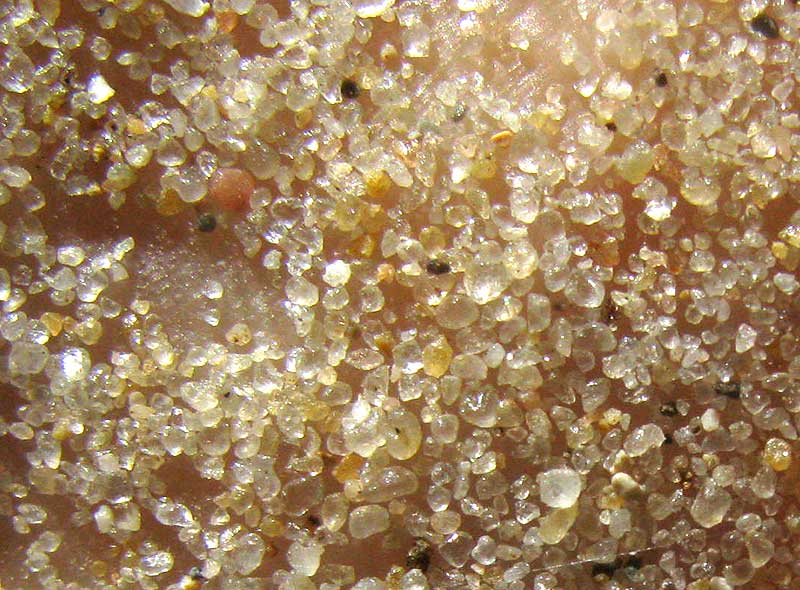Excerpts from Jim Conrad's
Naturalist Newsletter

from the July 15, 2012 Newsletter issued from the woods of the Loess Hill Region a few miles east of Natchez, Mississippi, USA
SOUTWESTERN MISSISSIPPI'S UPLAND, RAVINE-BOTTOM SAND
About a year ago when we were staying at Mayan Beach Garden Inn on the Caribbean coast north of Mahahual on the Yucatan Peninsula's eastern coast we looked closely at the sand forming the white beaches there. You can see that "shell sand" at https://www.backyardnature.net/yucatan/shellsnd.htm.
Here in southwestern Mississippi the bottoms of deep ravines (locally called bayous) cut into deep loess deposits along the Mississippi River are floored with sand and gravel. At the top of this page you can see how different our sand here is from the Yucatan's shell sand.
I understand the sand in our Loess Hill ravines as belonging to the Citronelle Formation, which was deposited here by being washed from hundreds of miles to the north approximately 1.5 to 3.7 million years ago, during the early Pleistocene and Pliocene epochs. A geological publication on the Internet describes Citronelle sand studied about 50 miles south of here in Louisiana as "subangular to well rounded, quartzarenite to sublitharenite sand containing about 90 to 95 percent quartz." In typical samples of sand in that study neither the minerals feldspar nor mica was noted.
Quartzarenite sand is basically sand formed of nearly pure quartz grains. Sublitharenite sand is sand with very little or no feldspar.
In other words, in Citronelle sand the vast majority of the grains are composed of quartz crystals. That's what we're seeing in the above photo. Quartz crystals are transparent, as are most of the grains. A fair percentage of the grains are tinged with amber color, indicating iron oxide content, making them the chert form of quartz. Feldspar usually is opaquely white or pinkish and I don't see such grains in the picture, or maybe just one or two pinkish ones. I recall that sand around my home in western Kentucky contained tiny, flat, thin, black or transparent, sheetlike grains, which were mica particles. There might be a very few tiny fragments of mica in our view, but not many.
So, I would say that here we have fairly unspectacular sand. However, as we continue to move about, it'll be interesting to see if more interesting grain types start turning up.
Sand along the Mississippi River not far away would be much younger and come from different places, so I'd expect it to be different.